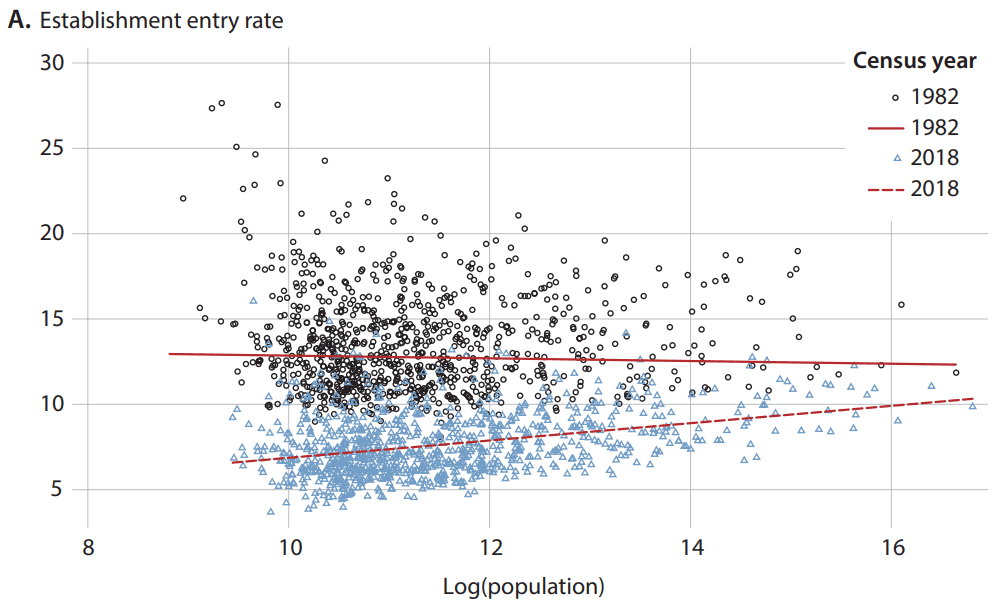Does City Size Matter When It Comes to Business Dynamism?
A recent Economic Synopses essay examined U.S. business dynamism—the rates at which firms enter the market, grow and leave—and how this has changed in recent decades.
In her essay, Economist Hannah Rubinton focused on the difference in dynamism between large and small U.S. cities. She noted that U.S. business dynamism has declined since the 1980s, with smaller cities seeing a larger decrease than larger cities.
“Given that dynamism is important for productivity and economic growth, the differential changes in dynamism across cities could be important to understanding the divergence in wages and skill-composition between large and small cities,” she wrote.
Entry and Exit Rates
The economist looked at the rate of establishment entry (the percentage of new businesses in a given year) and the rate of establishment exit (the percentage of businesses that close in a given year) among cities of different sizes.
Below are two scatterplots showing the relationships between the average rates for the periods 1978-82 and 2014-18 and city population.
Rubinton pointed out that the solid red lines show that during the earlier period, these rates declined as population rose, which meant small cities, on average, were more dynamic than large cities.
“By 2018, the relationship had flipped, with larger cities having higher rates of establishment entry and exit,” she wrote.
Why Did the Relationship Change?
She posited that one reason for this change is that large cities are growing faster and population growth appears to be a key factor in these rates of entry and exit. The increasing concentration of young people in large cities may be another reason; young people are more likely to be entrepreneurs.
“However, neither of these explanations fully accounts for these patterns; together, they can only explain about half of the increasing relationship between dynamism and city size,” she wrote.
Rubinton cited her 2020 working paper that found that these patterns of dynamism are consistent with increased competition in big cities.
“Large cities have become more congested than they were in 1980: As population has grown and technology has improved, rents and wages have increased,” she wrote. “Less-productive firms that cannot afford the higher prices are more likely to exit, leaving room for new firms to enter.”
Additional Resources
- Economic Synopses: Business Dynamism and City Size
- Regional Economist: How College Attainment Differs by Birthplace
- On the Economy: Did the Pandemic Spur Urban Flight? A Look at the Eighth District
Citation
ldquoDoes City Size Matter When It Comes to Business Dynamism?,rdquo St. Louis Fed On the Economy, June 14, 2021.
This blog offers commentary, analysis and data from our economists and experts. Views expressed are not necessarily those of the St. Louis Fed or Federal Reserve System.
Email Us
All other blog-related questions



